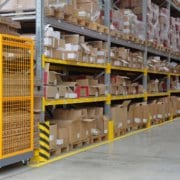Consumer Trends and Their CRE Implications
The push among shoppers for expanded e-commerce options has hit brick-and-mortar retailers hard in recent years, with 40% of consumers claiming to make online purchases at least several times per month. E-commerce is now a booming industry that is only projected to grow, doubling in size between 2016 and 2020. Why the change? It’s simple: consumers want a comfortable and convenient shopping experience, and they want to compare options in one place. Online shoppers don’t have to leave home or get dressed to compare products, reviews, and prices. They can see who is offering a product and at what price point and can use this information to weigh their purchasing decisions.
Read ahead to learn about retail trends, their impacts on growth projections, and how CRE professionals can adapt to the changing retail landscape.
The Bad News: E-Commerce is Proven to Reduce the Value of Retail Investments
Unfortunately, e-commerce does typically cause a dip in the profitability of some retail spaces. The US retail landscape is thought to be overbuilt by about 20%, with over 8,600 stores closures in 2019 alone. Many stores are closing low-yielding locations and building their online presence to remain competitive in a rapidly evolving market. Some retail chains are declaring bankruptcy, but those who are able to effectively implement an e-commerce plan have better protected themselves from implosion. While this is good for retailers themselves, it isn’t the best news for CRE firms looking to build or take on value-add projects within the retail market.
The Good News: There Are Still Viable Options for Retail CRE Investment
Although the retail prognosis may look grim, there are still ways to get your hands dirty in the retail market and turn a profit. Here are just a few of them:
Fulfillment Centers
If you can’t beat them, join them! Online retailers like Amazon require warehouse space to store product and fulfill orders. With the consumer push for faster shipping, more of these fulfillment centers are being built in close proximity to urban areas. And it’s not just big-name retailers that need these spaces. Subscription box services and small businesses are carving out space for themselves and need fulfillment facilities to stay relevant and meet consumer demand. Focusing on this market niche gives sponsors ample opportunity to grow in the direction of the market, no matter the scale of the project.
Short-Term Leases
Pop-up shops offer an environment in which shoppers can comfortably browse a range of seasonal products and tend to be more profitable than longstanding retail stores. Short-term tenants who can turn a profit will likely return annually, so building a rotation of pop-up leases can provide relative stability in an otherwise struggling market sector. Renting out theatrical spaces can be profitable in certain local markets as well as performance art continues to see a surge in popularity. Many performing arts companies are eligible for grants that cover venue cost for those that cannot afford to build and maintain their own facilities. There are many types of property suitable for performance art and many nontraditional short-term tenants looking for spaces that provide the flexibility they need. Building these tenant relationships can be mutually beneficial and drive revenue.
Retail Theaters
A retail theater is any retail space designed to turn the act of shopping into a memorable, unique experience. Internationally, retail theaters are gaining popularity, and the US market is catching up. Shopping malls and other retail spaces used to be social hubs, but with so many options available now for social activities (consider the craft brewery trend among Millennials), fewer people are congregating at retail locations to spend time together. Shops that offer products and experiences together are more profitable, like BYOB painting studios for instance. The more versatile a space is, the greater the market appeal to potential retail tenants. Ensure that the plumbing and wiring of retail spaces allows for a wide variety of businesses to take up shop, and you’ll have reliable, long-term tenants.
In summary, the struggling retail market still holds ample opportunity for outside-the-box thinkers. Projected growth in e-commerce has pushed down profitability of more traditional retail spaces but understanding what drives consumers and anticipating their shifting needs is a winning strategy to preserve profit and improve retention.
For more information on commercial real estate investor expectations and experiences, download this free best practice eBook!











